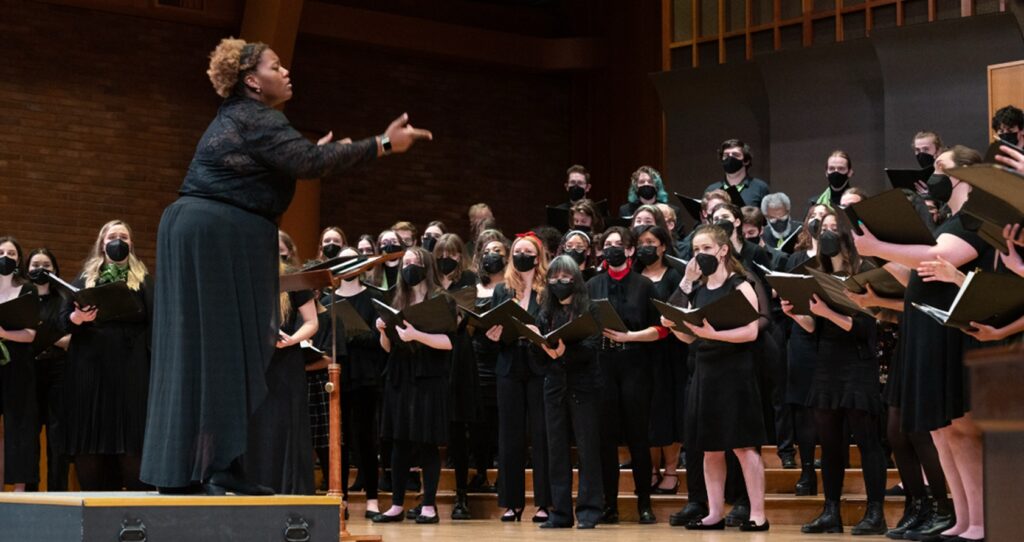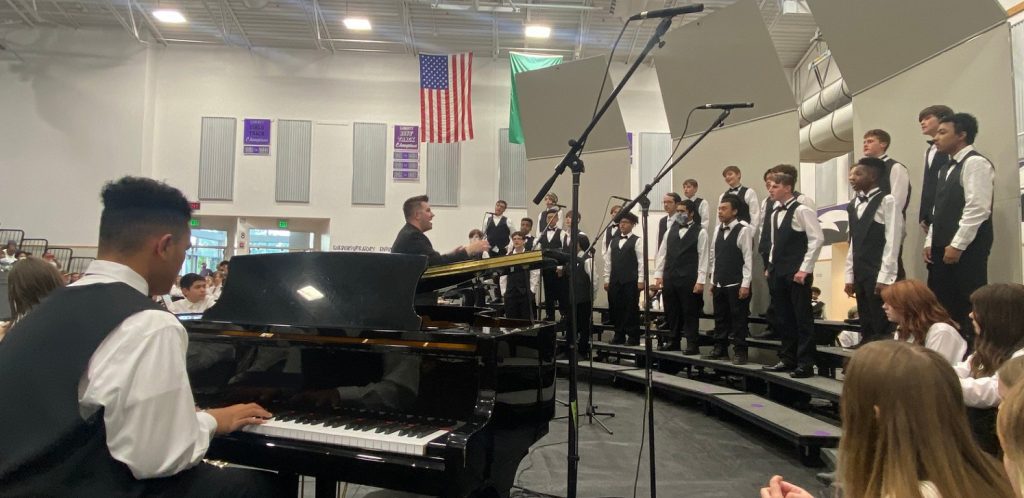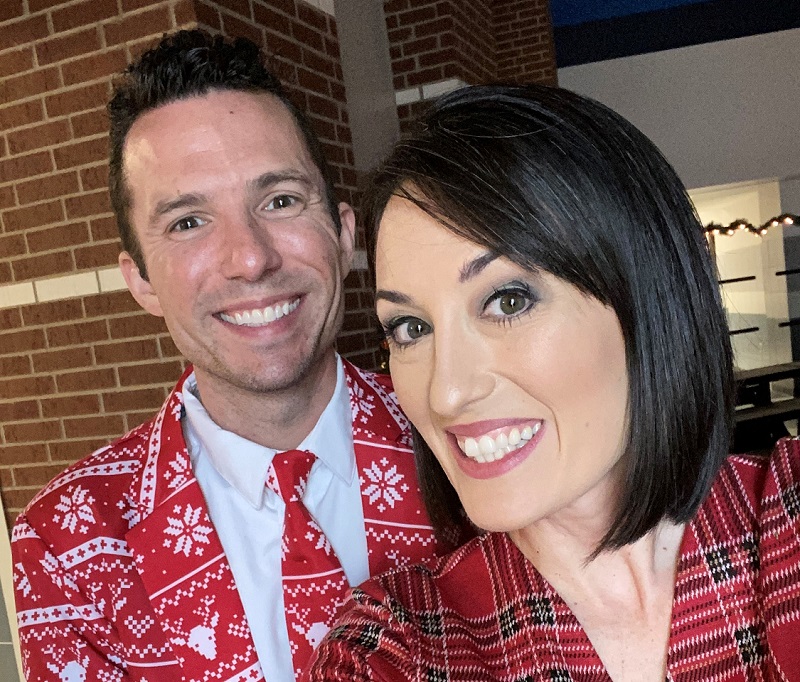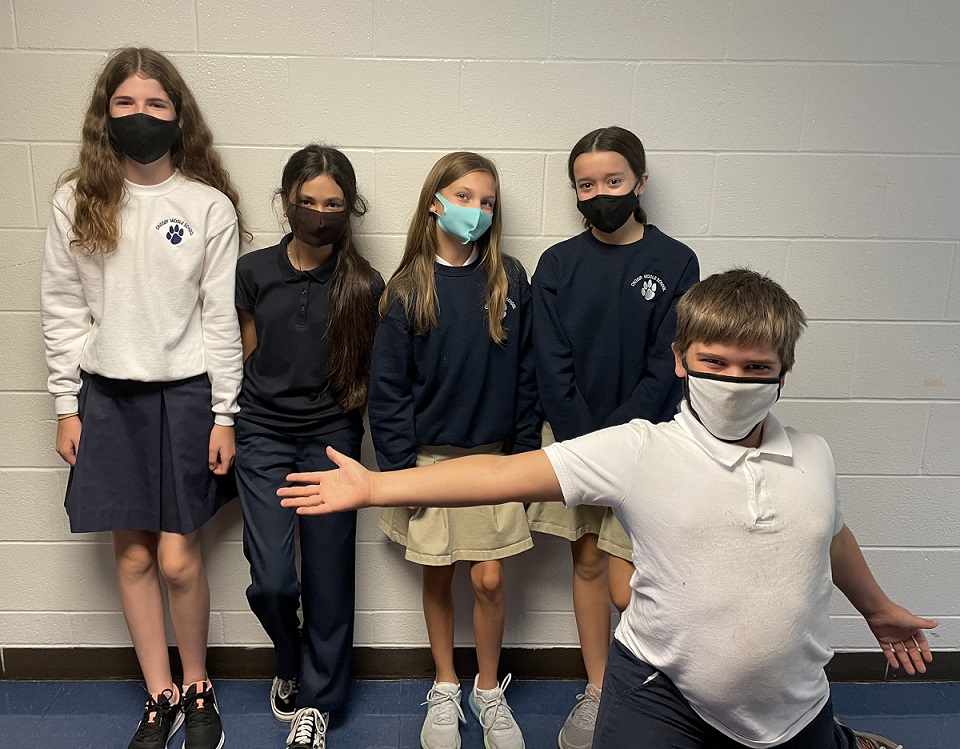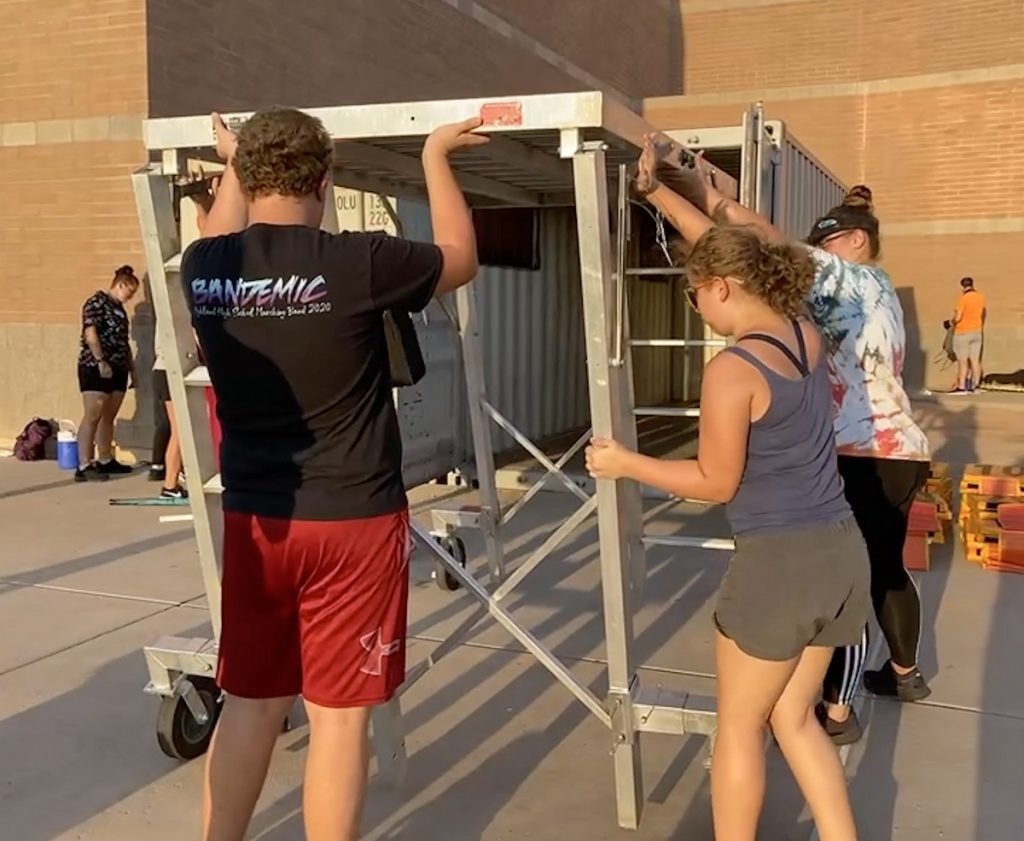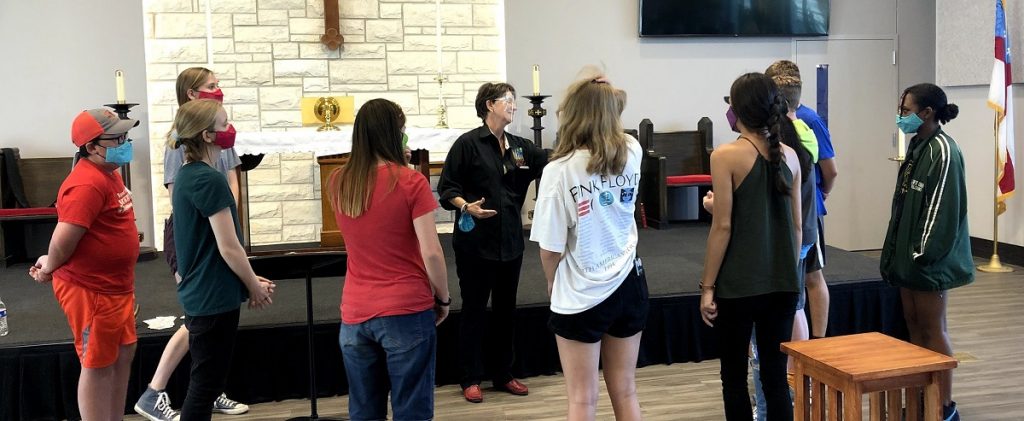Tagged Under:
Case Study: A Competitive Show Choir Boosts Choral Participation
Students at Highland High School in Illinois wanted a show choir, so their director went to work to create one.
In response to student demand, Highland High School in Illinois introduced an extracurricular show choir to its already multifaceted choral program that includes an a cappella group, madrigal singers, chamber singers, a traditional mixed choir and musical theater. The school switched out its jazz choir for the new ensemble in the spring 2018.
“If my students show interest in something, I want to make sure they can do it,” says Andrew Gibb-Clark, the director of choral activities for the Highland Community Unit School District 5 as well as the high school’s fine arts department chair. “It’s very important to me to offer a variety of opportunities for the kids, and that brings in different students that might not have been here before.”
Show Me the Funding
To launch the program, Gibb-Clark conducted research, requested funding from the school board and took a measured approach.
First, Gibb-Clark spoke to other choir directors, including a family friend who teaches at Davenport Central High School in Iowa. “He gave me a lot of information about the types of things that we would need,” he says.
After deciding to forge ahead, Gibb-Clark approached the school district’s board of education with the funding request. He gave a formal presentation that included his vision, his team and the project proposal. He also invited students to speak at the meeting about their reasons for wanting the show choir.
“I spent a lot of time talking to the board about the positives of the program and what music does for students,” Gibb-Clark says. “I had also looked into the cons … and told the board.”
The show choir’s startup needs included specialty risers that are safe for dancing, lighting and sound equipment that can be moved and set up in different spaces, and instruments — such as a drum set. In the end, the board agreed to fund $60,000 in purchases.
“It was not an easy decision for them; it wasn’t a unanimous decision either,” Gibb-Clark says. “Since then, they’ve continued to be very supportive and are very happy with the decision that they made.”
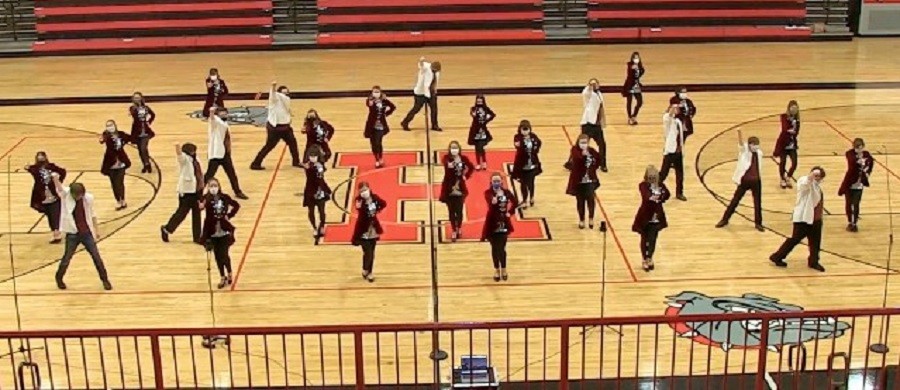 To help the board understand the value of the capital expense, Gibb-Clark has invited its members to performances and provided updates on participation, competition results and equipment use. In fact, all the audiovisual equipment bought by the show choir has been used for the other choirs and musicals while the sound system has also been utilized at graduation. “It was an investment beyond the show choir,” Gibb-Clark says.
To help the board understand the value of the capital expense, Gibb-Clark has invited its members to performances and provided updates on participation, competition results and equipment use. In fact, all the audiovisual equipment bought by the show choir has been used for the other choirs and musicals while the sound system has also been utilized at graduation. “It was an investment beyond the show choir,” Gibb-Clark says.
To pay for the show choir’s recurring expenses, such as music, choreography and set pieces, the choir boosters have picked up the slack, and choir families have paid for costumes. Since the school started the show choir, it has become a bigger project for the booster organization, which has then put a bigger emphasis on fundraising, according to Gibb-Clark.
The Highland show choir operates on a small budget of $7,000 to $8,000 a year. In comparison, other schools’ show choirs have an annual budget of $30,000, Gibb-Clark says.
In the first year, the show choir performed only at the school but has been traveling to competitions in subsequent years.
The Thrill of Competition
The competitive aspect combined with full choreography and popular songs attract students to the show choir. It offers an experience for singers that is similar to marching band for instrumental musicians.
“Marching band is very competitive and gives the students something to work for whereas a lot of the [choirs are performance-based],” Gibb-Clark says. “The kids enjoy that competitive aspect, and the only place they’re going to get it in our choral program is in the show choir.”
While the school previously participated in a cappella festivals, where the ensemble received a rating, Gibb-Clark eliminated that aspect due to a lack of useful feedback. “It’s hard to get comments on a piece of paper and know how to turn them into meaningful things for the students,” he says.
On the other hand, the show choir competitions attended by Highland offer immediate and in-person verbal feedback. “After you perform, you’ll go into another room for a critique,” says Gibb-Clark. “[The students meet] with a clinician and work with them right there at the competition. And I think that’s so extremely valuable rather than just comments on a piece of paper.”
In addition, the show choir gives students a physical activity. “The kids have to be able to dance and sing at the same time,” Gibb-Clark says. “Being somewhat in shape was something new for them.”
Show choir performers attend a weeklong summer camp to get a jumpstart on music and choreography. Throughout the year, the show choir rehearses once a week after school for two to three hours. It attends three competitions, fit into the schedule to avoid any conflicting events within the music department.
Because of the show choir’s live band, which is managed by the band’s assistant director — Jamie Keys — and comprises eight to 10 students, the choir and band departments must have strong collaboration. “We have good communication in our department meetings, and we’re usually all on the same page,” Gibb-Clark says.
Along with the curricular choirs, the show choir also participates in two school concerts and a pancake breakfast fundraiser.
Rise in Numbers
Since Gibb-Clark’s first year at Highland in 2017-2018, the number of choral group members at the small school — with 850 total enrollment — has nearly doubled from 55 to 100 participants.
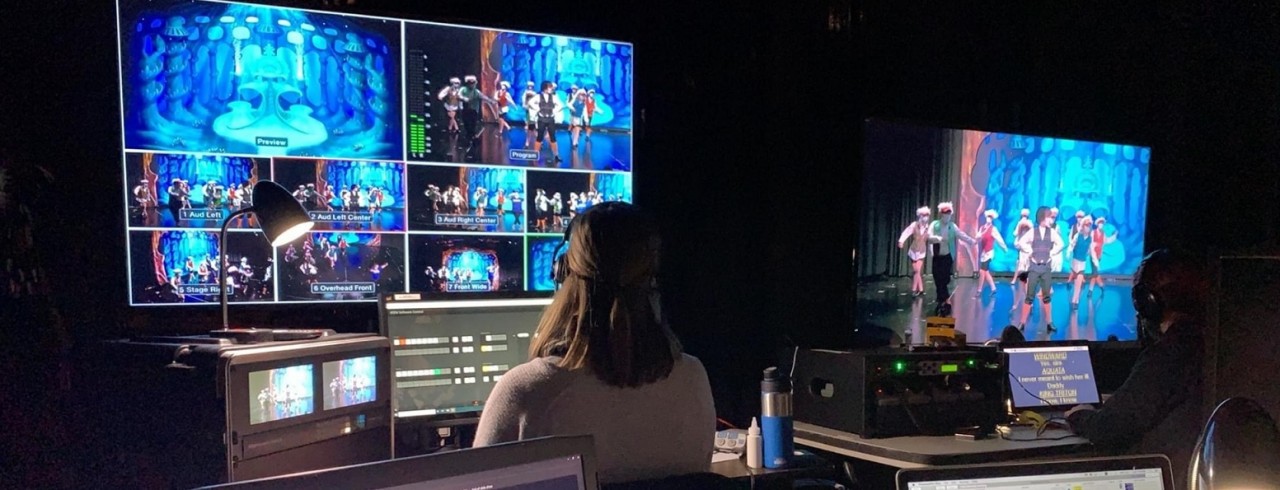 At Highland, each ensemble focuses on different musical genres and gives students different learning and performance opportunities. For example, the madrigals sing at the Kansas City Renaissance Festival, do 15 to 20 community performances per year and host a dinner show.
At Highland, each ensemble focuses on different musical genres and gives students different learning and performance opportunities. For example, the madrigals sing at the Kansas City Renaissance Festival, do 15 to 20 community performances per year and host a dinner show.
Gibb-Clark has put a greater emphasis on putting on professional musical theater productions. “I think the growth of the [choral] program and the strength of it is that we have so many different things that are strong on their own,” Gibb-Clark says.
Still, the show choir has been a big impetus for the increase in choral participation since about 50% of the high school’s singers also participate in the group.
In the first year, 30 students performed in the show choir and show choir band. In 2018-2019, the numbers went up to 40. In 2019-2020, the group grew to 50 members.
In the future, Gibb-Clark would like to create a junior varsity level show choir and host a competition. Getting to 60 members would allow the group to split in half, he says.
Gibb-Clark will continue to oversee the show choir overall, but he will no longer handle its day-to-day operations. He decided to take a step back after the birth of his first child in September 2020. He continues his curricular roles at both the middle school and high school as well as directing the musical and madrigal dinner.
“My accompanist [David Wilton] spent a lot of time doing show choirs in the past,” Gibb-Clark says. “After getting it started and putting in all the groundwork, I felt comfortable to let him take over going forward.”
Overall, Gibb-Clark, who had never participated in or directed show choirs in the past, says that he and his students have gained a lot of valuable experiences. “The first year that we went to competitions, we finished dead last by a lot,” he says. “It was a learning experience. The kids were OK with it. They understood that they were trying to build something and not worried about results yet. They’re learning a new art; they’re learning a new form of performance. We were focused on individual and group development rather than results. … In the second year, at every competition, our scores went up, and we beat two groups. … The biggest difference was our growth and understanding of the performing art, of what show choir is.”










